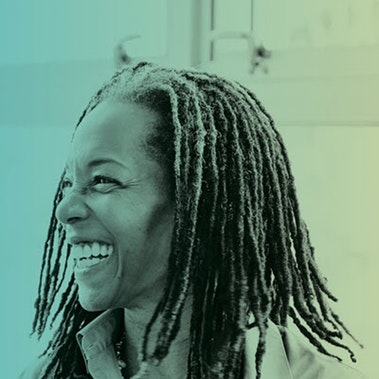This article first appeared as a blog on LinkedIn
Since Oliver Wyman launched its third Women in Financial Services report in early 2020, the COVID-19 pandemic has created significant threats to gender balance in financial services as well as some silver linings in the longer term. Maybe.
In collaboration with the 30% Club, we hosted a discussion on how COVID-19 has affected women as both customers and employees of financial services institutions, exploring practical steps organizations are taking. We brought together some of the industry’s leading executives, responsible for steering businesses out of this crisis and embedding inclusion principles into this journey:
- Amanda Blanc – Chief Executive, Aviva
- Ann Cairns – 30% Club, Global Chair; Executive Vice Chair, Mastercard
- Naveed Sultan – Managing Director & Chairman, ICG, Citi
- Inez Murray – Chief Executive Officer, Financial Alliance for Women
Our speakers are at the forefront of driving gender balance in their organisations and more broadly. They made clear that things have got tougher for women in financial services since the pandemic -- as customers, employees, leaders and in society more broadly -- but that the way the pandemic has accelerated and reset provides a golden opportunity to keep the positives we never thought possible.
Female customers are more likely to be vulnerable and demand simplicity now more than ever.
Women are already underserved, typically making up roughly 30 to 40 percent of the overall customer portfolio. “Underplanned and undersaved” said Amanda, noting that 60 percent of women have never calculated if they can afford to retire, compared with 45 percent for men.
Women are also more likely to be impacted economically by the pandemic, and more likely to work in sectors impacted by job losses, such as retail and hospitality.
The rapid migration to digital has been powerful: Mastercard saw more customers move to online services during the first 10 weeks of lockdown than it had seen during the previous five years, said Ann. We know that women are more likely to be digitally excluded – for example in the over-70 age group, where there are 20 percent more women than men. Also, as business owners, women often rely on in-person sales that are hard to move online and they feel less adept at managing additional transaction requirements such as cyber security.
Fact is, financial services in its current state does not work for most women.
In a low-margin and low-growth world, designing for women is a huge opportunity.
“Our economic, political, and commercial systems are tailored to the needs of men as a default” said Naveed. Women’s World Banking notes that many financial firms think their products and services are “gender-neutral”. What they mostly don’t recognize is that “neutral” products were often designed with men’s needs in mind — and unintentionally put women off. The reverse is not true, however: when products are designed with women’s distinctive needs, the data shows that they are often better for men too.
As the pandemic fades, organizations should use digitization to ramp up education, simplify interfaces, and increase direct marketing to get out on the front-foot of redesigning offerings with simplicity at their core – a key demand of women. With growth in short supply, women represent arguably the largest growth segment, a $700 billion opportunity.
COVID-19 is negatively impacting women as employees. While there are glimmers of hope, structural solutions are needed.
A recent poll we conducted didn’t surprise me: in the short term, the majority thought the pandemic would be negative for gender balance. This echoed numerous conversations I’ve had in recent months with women who say they are shouldering much more family responsibility than male colleagues. These leaders also noted that women seem to be returning to physical workplaces at a lower rate than men and believe this will impact women’s career progression.
Women in mid-career– often sandwiched between child and elder care, even more so after the pandemic– are likely to be particularly disadvantaged. We know this is a specific pain point for our industry. An earlier edition of the Women in Financial Services report identified that not only were this group more likely to leave the industry than their male counterparts, but they were 20-30 percent more likely to leave their employer than their peers in other industries.
What was striking for me was how the poll results flipped when we asked about the longer term impact of coronavirus. More than 60 percent thought some of the practices implemented during the pandemic, such as flexible working, could have a positive impact for women.
Firms are already doing a huge amount - Mastercard, Citi, and Aviva are leading the way with transparency, targets, data, and metrics. But this “long term” will not materialize without an even deeper focus on structural solutions that keep the momentum and creativity that we saw so powerfully during the pandemic and never believed possible – for example, flexibility in location and individual personal commitments, job shares at mid and senior levels, and promotions while out on parental leave – all of these have become part of the tool kit moving forward.
“Millennials and future generations are not going to be interested in working 15 hours a day and making it to the top” commented Inez. Perhaps we need a complete redesign of the career web, with many more paths and options?
“Man-bassadors” – we need you
Despite the reality of many positive stories of female leadership at both country and company levels during the pandemic, Ann highlighted a recent study that showed women are still perceived to be less strong leaders than men, especially by young men.
Naveed observed that many people confuse leadership with style and we need to broaden our perception of what makes leaders. He also pointed out that while white men get applauded for leaning into diversity efforts in the workplace, when women do the same it can hold them back.
I find this totally shocking – but even more reason that we need white men standing by our sides and as strong, supportive bosses.
Purpose: the polestar of the panoramic approach
While this webinar focused on women as customers and employees, our recent report highlighted the value of a panoramic approach – gender balance across all stakeholder groups, from investors, shareholders and suppliers to regulators and in society more broadly.
When asked for the single greatest action financial services firms should focus on, Inez highlighted a commitment to values, which women (and men) care about. Gen Z rank the diversity of the organizations they join as one of the top factors. Investors increasingly look at boardroom diversity with greater focus on the “S” in ESG to invest in “purposeful” companies. A focus on women customers brings greater simplicity -- great for supply chain transparency and often for cost. As Naveed said, firms cannot reach their potential without taking women into consideration.
In a low-margin, low-growth world, where new players are increasingly moving in, financial services firms are grappling with purpose more than ever. Those that put gender and broader diversity balance at the heart of their mission will be better at crafting products, attracting talent, generating shareholder value, and creating the society they seek.




